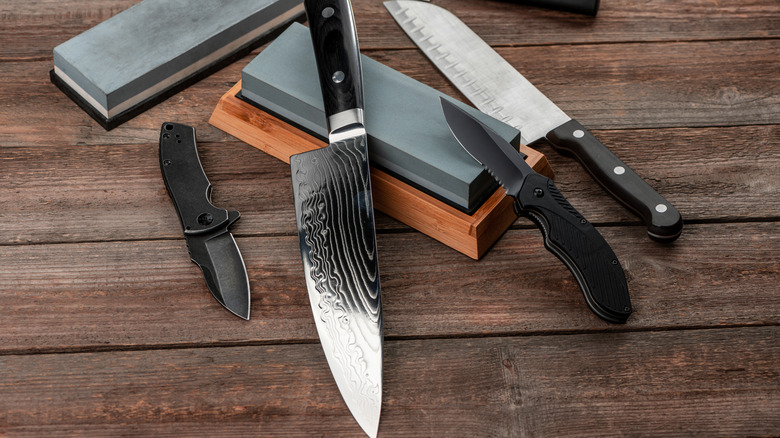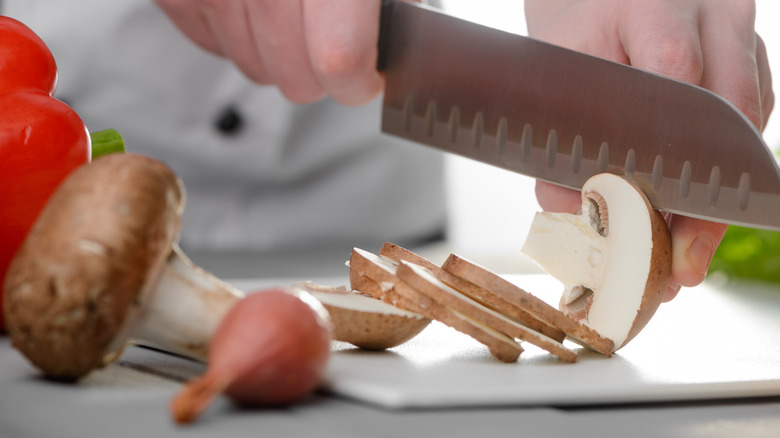What's The Difference Between A Santoku Knife And A Chef's Knife?
Does the type of knife really matter as long as it gets the job done? The simple answer is yes, especially when it comes to specialty knives such as the Japanese Santoku knife. Any cutting implement in the kitchen needs to be sharp, functional, and easy to use, but there are multiple considerations beyond those basics. The differences between a Santoku and a traditional chef's knife revolve around things such as tips, bevels, indentations, blade thickness, and the type of steel, explains Masterclass.
The word Santoku translates in Japanese as "three virtues," which are represented in the knife's abilities to chop, slice, and cut. It's important to note that the Santoku isn't considered a "specialty" knife in Japan but is rather a multipurpose kitchen tool, per F.N. Sharp. That makes it similar to the Western-style chef's knife gracing at-home and professional cutlery collections in the United States and Europe. But design differences do affect functionality and results, so let's look at those subtle yet significant nuances.
Differences in design and function
Kamikota, a Tokyo knifemaking company sourcing materials from centuries-old steelmaking regions in Japan, points out the two most obvious differences between Santoku chef's knives: origin and blade. Santoku knives originated in Japan, and most are still made there. The blades typically feature high-carbon steel that's harder than chef's knives yet thin enough for precision cutting. This contrasts with the relative dullness of Western stainless steel knives, according to Masterclass.
Another important distinction is the traditional single bevel of a Santoku knife. This means the sharp cutting edge is only present on one side of the blade, compared to the double bevel of chef's knives. Though, it's worth noting that some contemporary Santoku knifemakers make dual-sided bevels. F.N. Sharp points out the recognizable indentations on many santoku blades, which prevent food from sticking during the cutting process. These are known as Granton edging and feature what is more commonly considered a scalloped design.
Finally, the shape of the blade differs, particularly at the tip. Santoku styles typically curve from the knife's spine to its tip rather than coming to a sharp point like Western chef's knives. This edge of the blade facilitates a chopping technique (per F.N. Sharp) rather than the rocking back and forth method (via Serious Eats).
Regardless of which knife style you're accustomed to, it's always exciting to jazz things up with cutting-edge kitchen tools. So, keep an open mind and consider merging Japanese and Western techniques for the ultimate chef experience.

